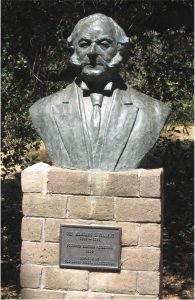Click on the images for a closer look.

In 1810 Spain withdrew funding for its imperial outposts in California. Mexico City, the seat of New Spain, no longer had to send taxes back to Spain but they also ceased sending supplies to California. Mexico became independent in 1821 and sent a Governor to California in 1825; between 1810 and 1825, the California Missions had little outside funding or military support (Duggan 2016). Reports made by Russians about the deplorable conditions faced by Native Californians at the missions were made after 1810: Russian reports about the living conditions at Mission Dolores in San Francisco in 1806 were favorable but by 1815 there were mentions of filth and hunger (Duggan 2016).
With the lack of support from Spain it fell to the shoulders of the Mission Indians to provide both food and materials that they had previously been provided with. The presence of Russian fur trappers around Bodega Bay who were keen to trade with Mission authorities in order to feed their own people at trading and hunting outposts increased the pressure on Native laborers. Military authorities were increasingly interested in trading with the Russians because their Spanish supplies had been cut off. Missions became increasingly violent and coercive as they were more and more dependent on Indian labor. Racist and paternalistic treatment of Indians by Mexican landowners, when combined with racist and violent American ideologies, helped pave the way for California’s genocides in the mid 1800’s (Madley 2016).

With its empty pockets, the military was often unable to pay their soldiers; instead, they were paid with land which, as it had no recognized owner other than Mexico, was abundant. General Vallejo, who had been stationed in Sonoma to oversee the closure of the Mission, was given a land grant for upwards of 66,000 acres and built a rancho in Petaluma. In at least two cases, Vallejo may have stepped in to secure land grants for Coast Miwok in Marin County. In 1835, 56,000 acres were granted to Coast Miwok at Rancho Nicasio, historically known as Echa-tamal (Schneider 2017). Although this land grant had been successfully petitioned for, Vallejo later rescinded this grant and gave it instead to his son in law. Probably around the same time, Camillo Ynita successfully petitioned for a grant for his ancestral home at Olompali (Lee and Schneider 2015), but it appears that he sold it around the time that California joined the Union (parks.ca.gov).
General Vallejo paid his soldier Juan Castaneda with 11,000 acres in what is now Rohnert Park and Cotati (this number varies. The Rohnert Park Historical Society puts it at 11,000 but other sources put it at just over 17,000 acres). Lomas de Kotate was the first Mexican land grant in the area where Sonoma State sits, but it passed through several hands before resting with Fred Rohnert, one of the historical characters from the library bench. Check the California Treaties section to learn more about the land grants.
